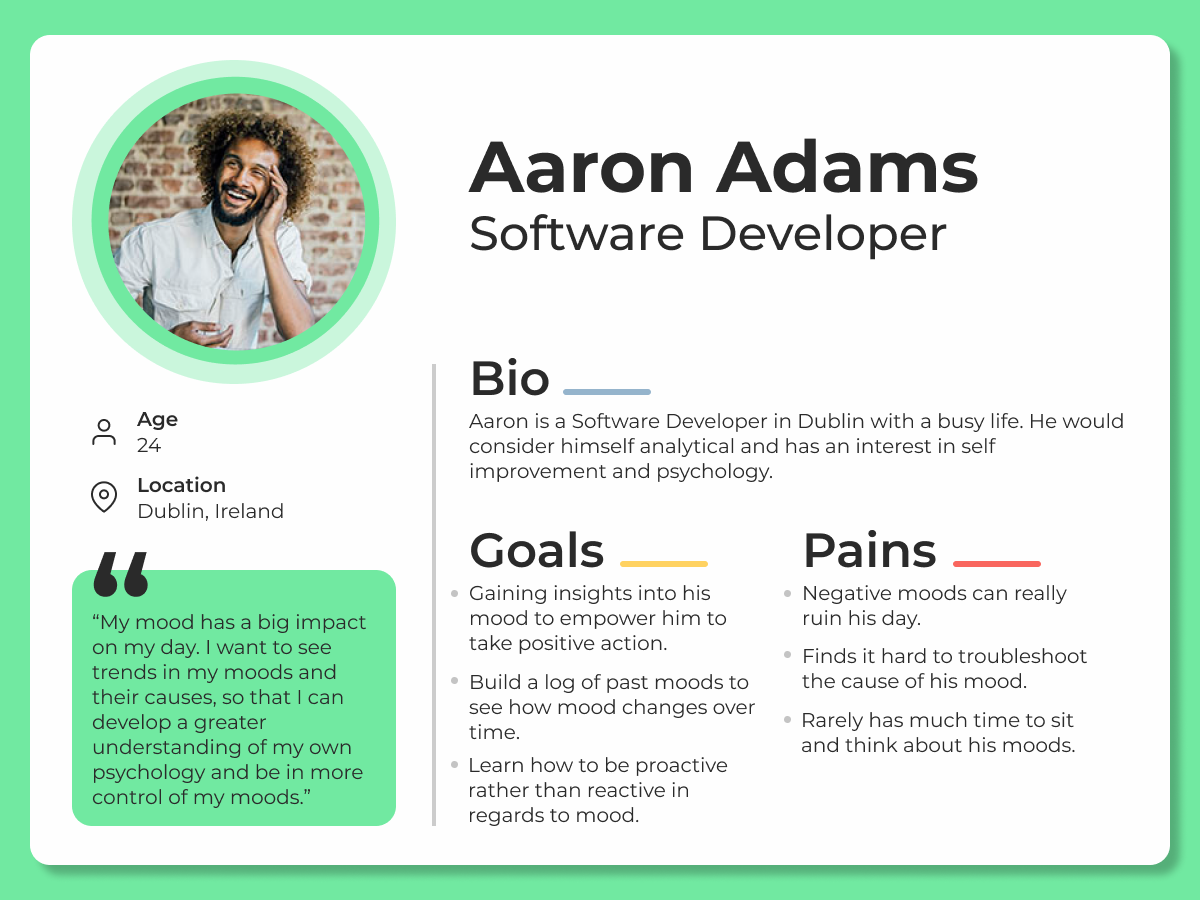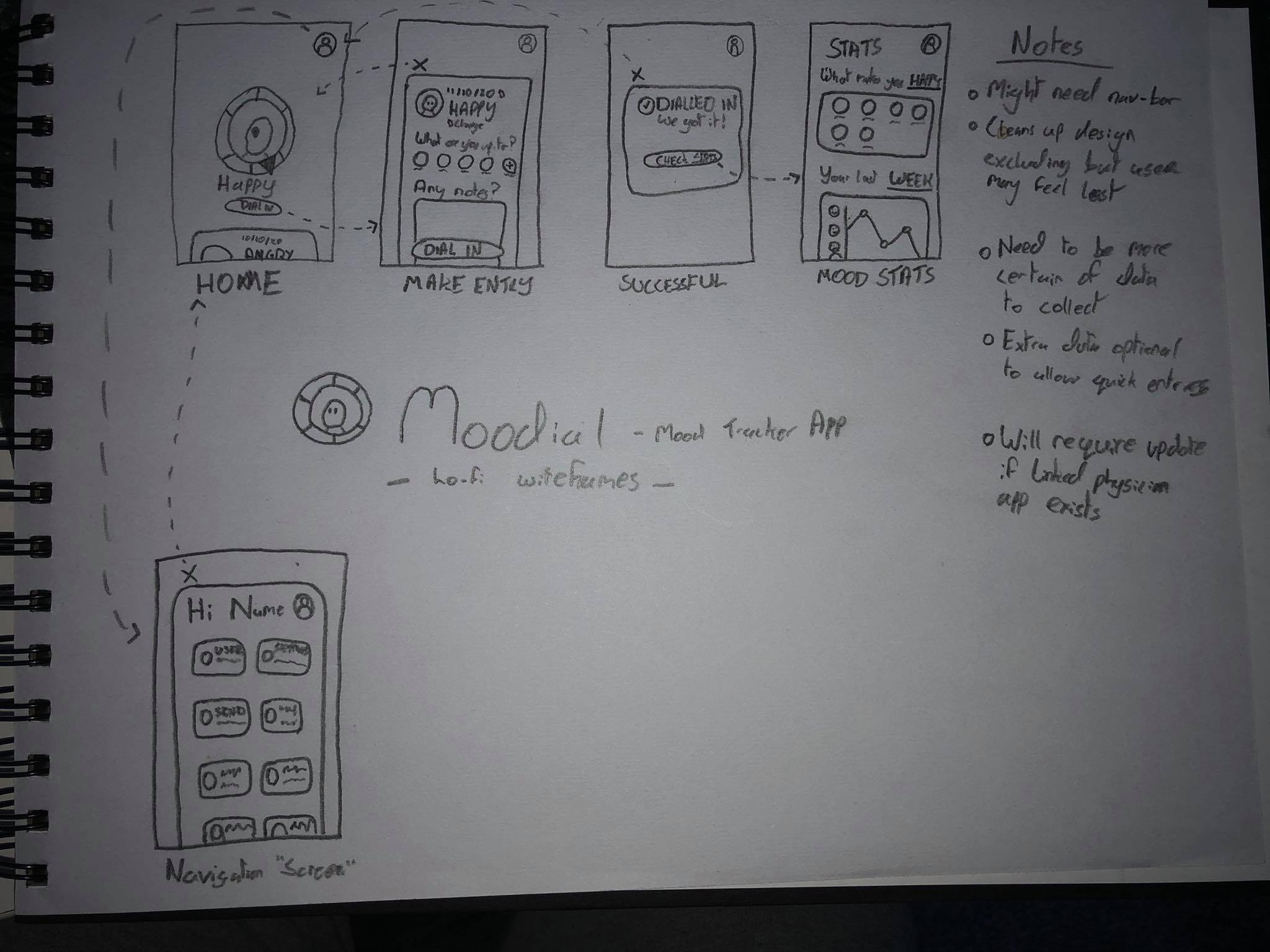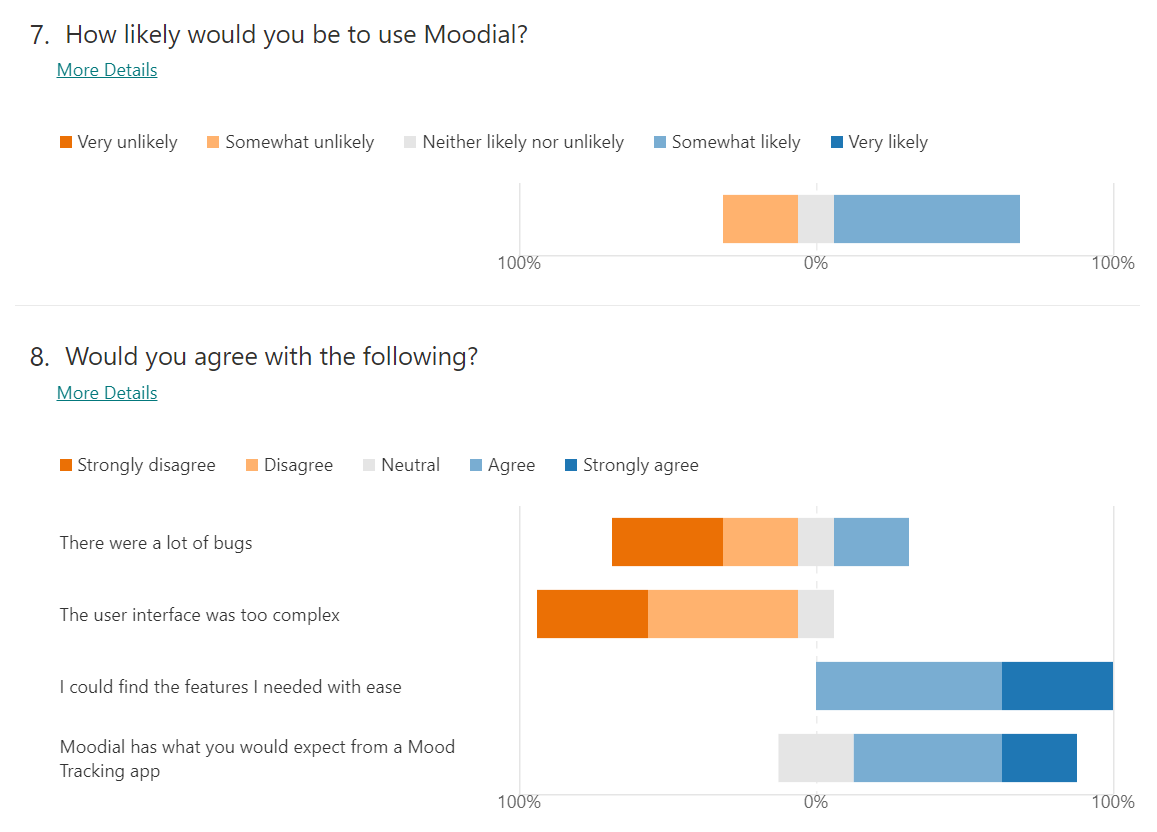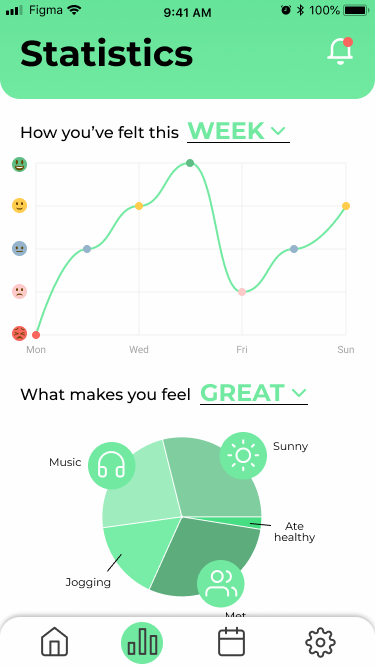User Research
A UI/UX problem begins with the user. Designing with a lacking understanding of the user requirements is equivalent to shooting in the dark. User research should be the fuel to an analysis of a problem such as the one being dealt with in this project. Following the research into the topic of mood and how to model it, the techniques deployed to ensure user-centred design and develop an understanding of user requirements included user stories and user personas.

Prototyping
Following the period of user reseach, low-fidelity wireframes were sketched down on paper. The sketches provided a way of brainstorming ideas and a reference point for the lower-level creation of high-fidelity wireframes that get closer to the final design and showcase more detail.

Low level design included carrying on from the sketch work to progress into high-fidelity, interactable wireframes to give a sense of what a functioning prototype would look and feel like. Figma, the online design tool, was used for this.

In Action
The design was implemented using Flutter as a cross-platform mobile development toolkit. The front-end interacts with a Flask API web application that performs operations on a MongoDB database.

User Testing
Given that the approach to this UI/UX project was of a very user-centred nature, it was logical to utilise user testing as a testing method. As such, the focus group was quite small. A group of 13 UI/UX/IxD students volunteered to join the tests. The data collected was of a mostly qualitative nature and was gathered by means of a survey to be completed after attempting a set number of tasks that would test each function of the application.
The full test results are available in the thesis linked at the start of this page.

Future Work
Future work would include building custom widgets to give the app a more unique look and feel, closer to what was envisioned in the design stage.
The reflection stage of mood tracking could be improved by further developing the Statistics and Calendar screens of the app. Input from a professional psychotherapist could be insightful to provide more useful data visualization.
A notification system could also be included in future work, giving the user the ability to set reminders to log their mood so that they do not fall out of the habit.
The contributions by testers provided valuable insights into what could be done as part of future work to further improve the app. This showed the benefit of the user testing approach as ideas outside of the developer’s mindset can come to fruition. The results show that this app has the foundations for being a useful assistant in a user’s self-management of mood and that further work with a concentrated focus on eliminating existing bugs and refining UI/UX is required to see it to that goal.
Given that this project was an introduction to mobile application development, the processes of user research, following UI/UX best practices, seeing through the development of an app through coding and user testing, were all immensely educational. Having not worked on a project of this scale and thoroughness before, it was greatly rewarding to work alongside testers and receive feedback on a project that received so much time and effort.
